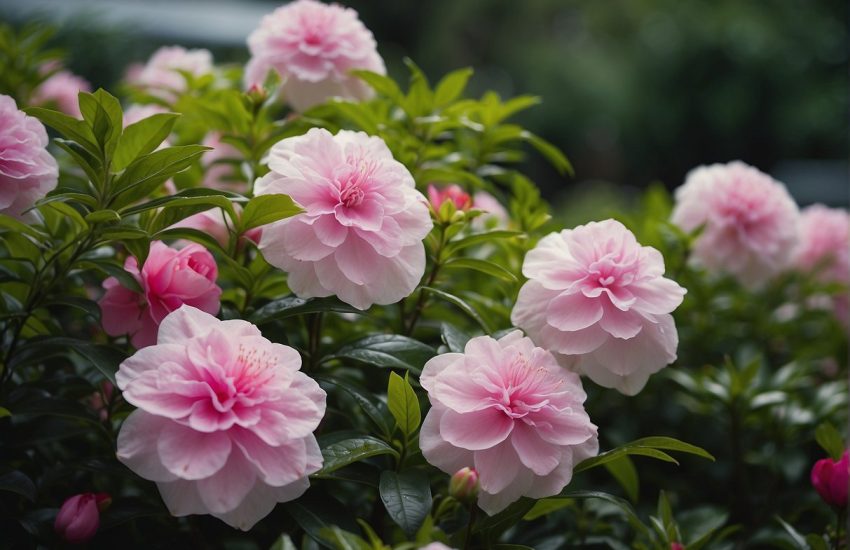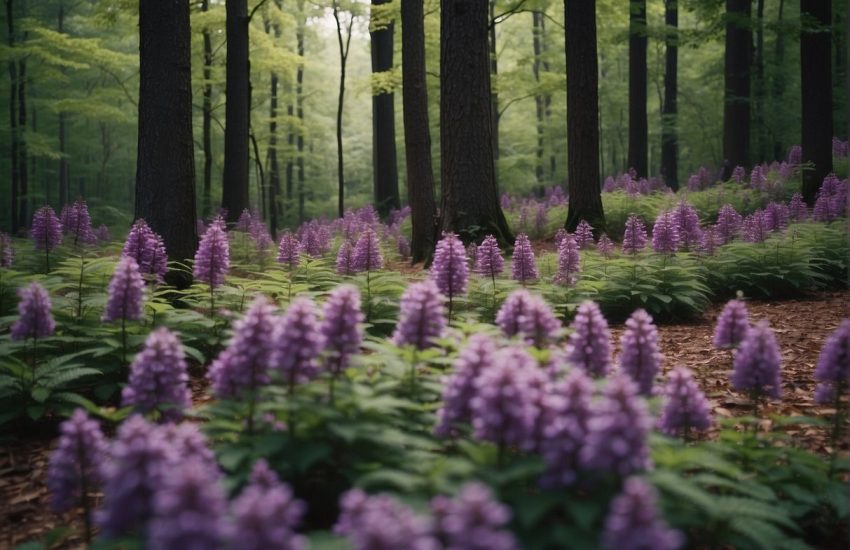Best native vines for trellises to enhance privacy and curb appeal
Native vines do wonders on trellises, bringing a splash of natural beauty while giving a little love back to local ecosystems. They’re usually low-maintenance, shrug off drought, and draw in pollinators—practical and, honestly, kind of a win-win for the planet.
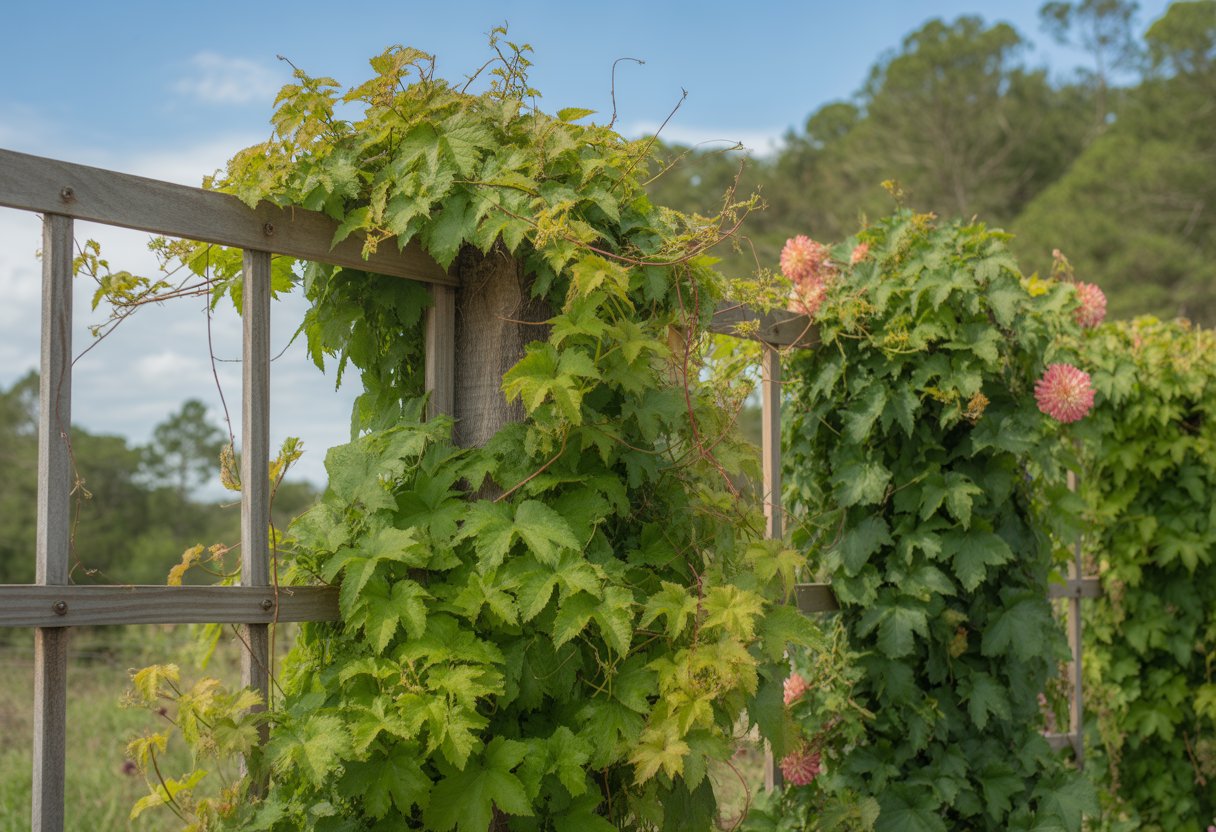
Some of the best native vines for trellises include clematis, trumpet vine, and coral honeysuckle. These all have that vigorous, almost unstoppable growth and showy flowers that make a garden pop.
They adapt to different climates and soil types, so you don’t have to be a specialist to get them going. Gardeners love them for their ability to cover a structure fast, and let’s be honest, who doesn’t want a little more privacy with a lot less fuss?
Top Native Vines for Trellises
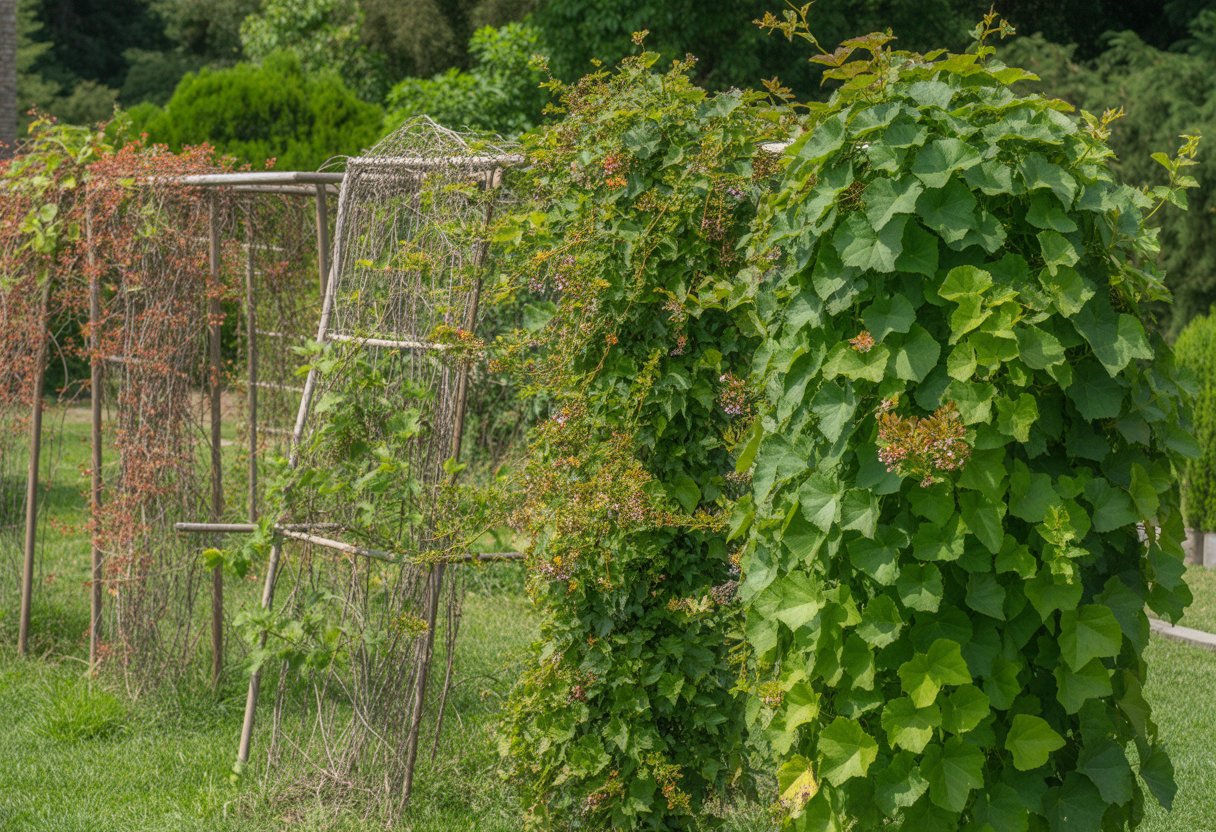
Picking the right native vine can really make or break your trellis. Some vines give you seasonal color and even fruit, while others just hang on and stay green all year.
It’s worth thinking about what you want—shade, privacy, or maybe a little of both.
Vitis californica
Vitis californica, or California wild grape, handles trellises like a champ. Its big, lobed leaves and clusters of blue-black grapes show up in late summer, and birds and pollinators seem to love the place.
This vine can stretch 15 to 30 feet, so it needs a solid trellis. It likes full sun but won’t complain about a bit of shade, and once it settles in, you barely have to water it.
A little pruning here and there keeps it in check, but it’s not needy.
Evergreen Vine Varieties
Not many native vines stay green all year, but the ones that do—like Evergreen Huckleberry (Vaccinium ovatum)—are gold for privacy. They grow dense and slow, making a great living screen, especially in shadier spots.
You won’t have to fuss much with these evergreens since they keep their leaves through winter. They like acidic, well-drained soil and usually stay under 15 feet, which is kind of perfect for smaller spaces or if you want to mix things up.
Other Popular Native Choices
Lonicera sempervirens (coral honeysuckle) and Clematis ligusticifolia are both worth a look. Coral honeysuckle’s red, tubular flowers pull in hummingbirds, and in milder climates, it even stays semi-evergreen.
It can climb up to 20 feet and doesn’t mind a bit of shade. Clematis ligusticifolia has delicate white flowers and loves a sunny fence or trellis.
This one grows to about 10 to 15 feet and appreciates a drink now and then, plus a little trim here and there.
Selecting the Right Vine for Your Space
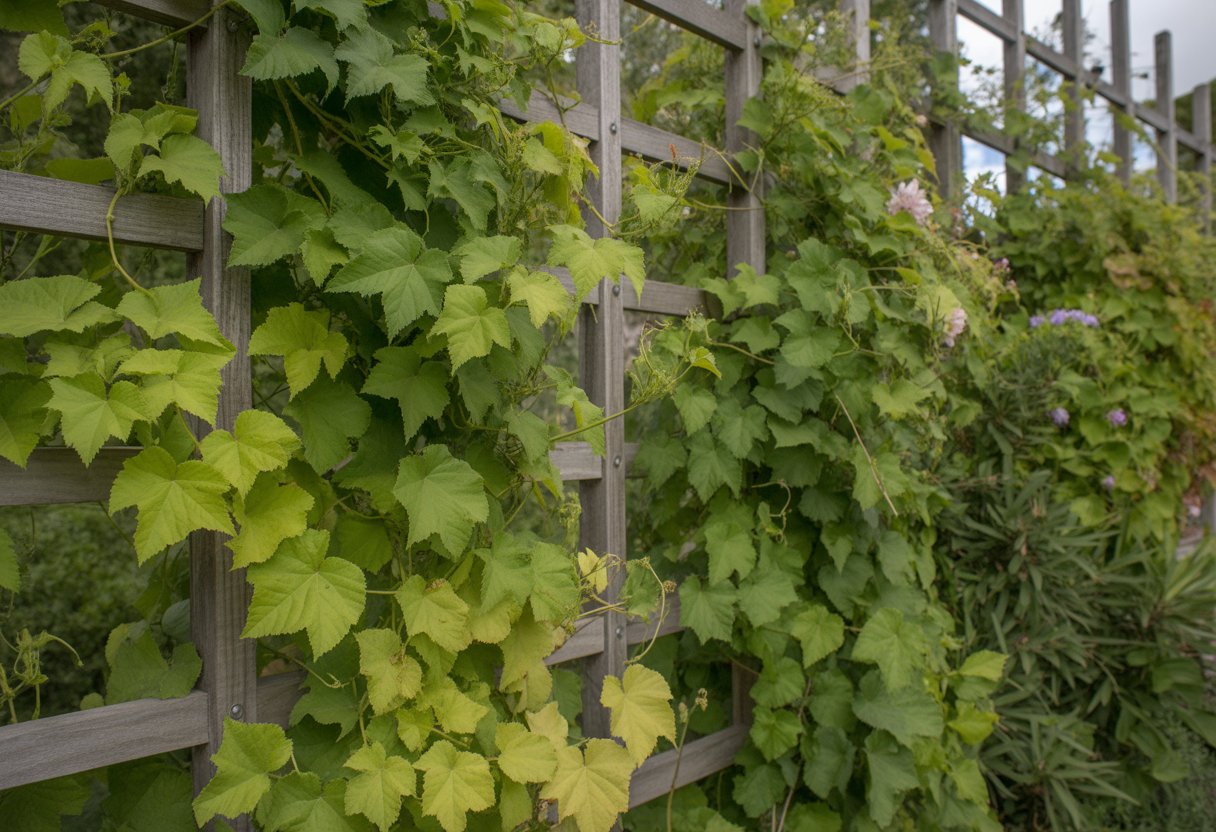
When you pick a native vine, you’ve got to think about your spot—sun, soil, and what the vine naturally wants. If you line up those factors, your trellis will look good and last.
Climate and Hardiness Considerations
Native vines all handle temperature and seasons a bit differently. It’s smart to check the USDA hardiness zone for your area before you plant.
Clematis virginiana thrives from zones 4 to 9, so it shrugs off cold winters and hot summers. Passiflora incarnata prefers zones 6 to 10 and does best where winters aren’t too harsh.
Humidity matters too. Vines that love moisture might struggle if your climate is bone-dry, unless you’re willing to water more often.
Soil and Sunlight Requirements
Most native vines want at least 4-6 hours of direct sun, though a few are fine with less. Soil makes a difference—well-drained loam is usually best, but some vines can put up with sandy or clay if you help them out a little.
If your soil’s not great, mixing in some organic matter can work wonders.
Here’s a quick cheat sheet:
| Vine Name | Sunlight | Soil Type |
|---|---|---|
| Lonicera japonica | Full sun to shade | Well-drained loam |
| Campsis radicans | Full sun | Sandy to loamy |
| Solanum dulcamara | Partial shade | Moist, rich |
If you match the vine to your sun and soil, you’ll get better growth and more blooms, and you won’t have to work as hard to keep things looking good.
Care and Maintenance of Native Trellis Vines
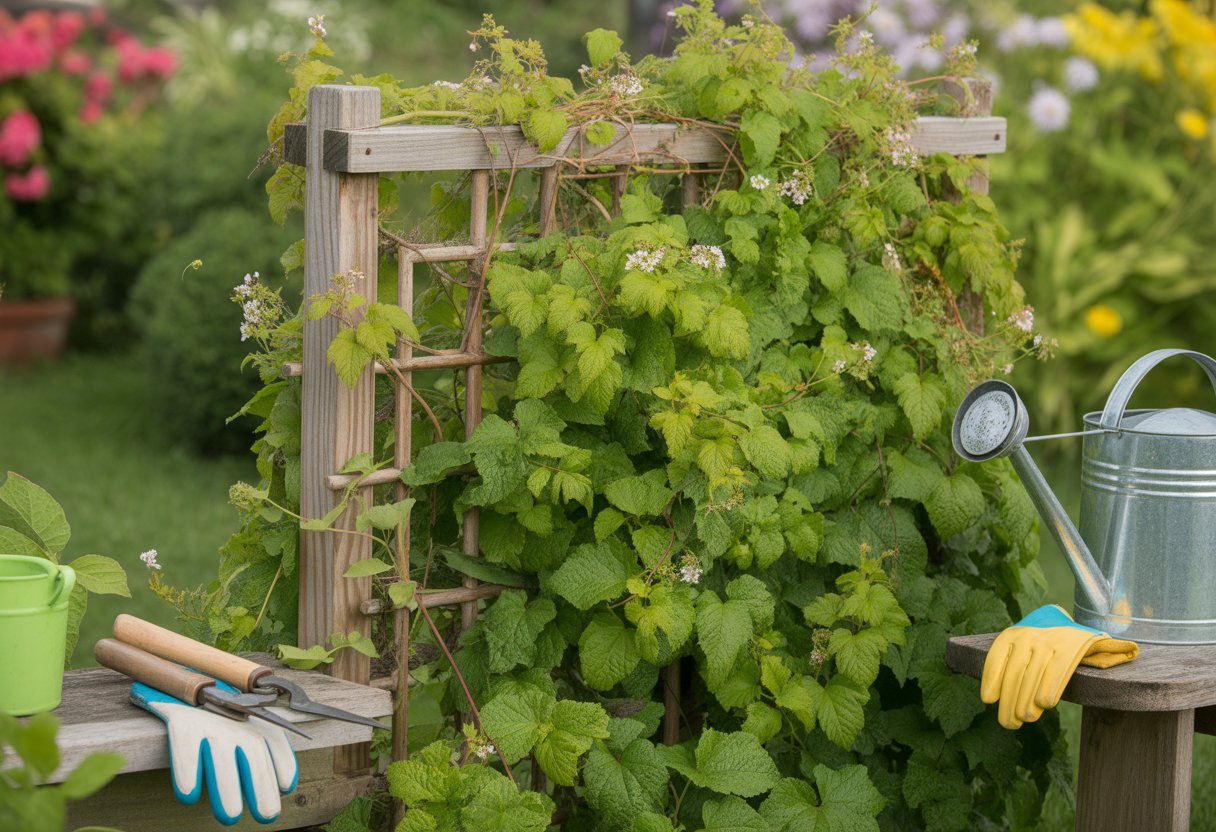
Native vines on trellises need a bit of regular attention to stay healthy and keep flowering. You’ve got to shape them and make sure the trellis still gives enough support, and don’t forget about watering and feeding.
Pruning and Training Techniques
It’s best to prune native vines in late winter or early spring, before they wake up for the season. Cut out dead or crowded stems to open things up for sun and air.
Start training vines onto the trellis early in the season. Guide the stems gently and use soft ties or clips—nothing rough that’ll bruise the plant.
Some, like trumpet vine or honeysuckle, really benefit from a hard prune every year to get more blooms. Others just need a quick trim to stay tidy.
It’s a good idea to check in regularly and snip off anything weak or diseased before it spreads.
Watering and Fertilization Needs
Most native vines like a steady amount of moisture, but they usually adapt once they settle in. If you’ve just planted them, you’ll want to water regularly during dry spells—about an inch each week feels right.
Don’t let the soil get soggy, though. That’s a recipe for root rot. Mulch does a nice job keeping soil damp and the temperature steady.
You don’t need to go overboard with fertilizer. A balanced, slow-release type in early spring seems to do the trick. If you pile on too much, you might get tons of leaves but not many flowers.
Every so often, test your soil. This helps you figure out if you need more phosphorus or potassium, especially if you want better blooms.

